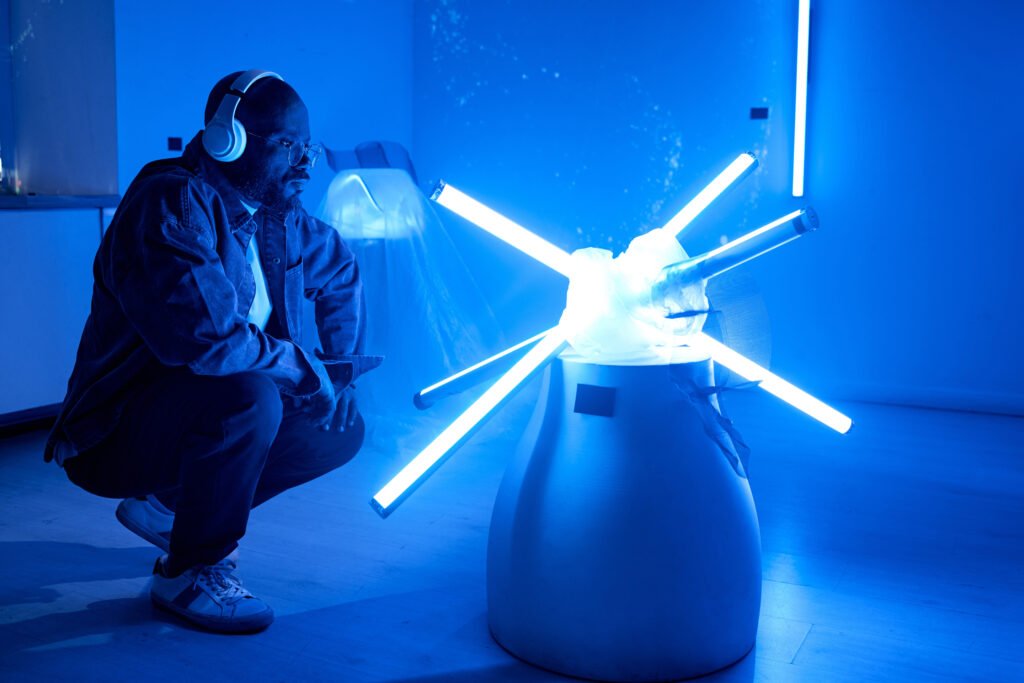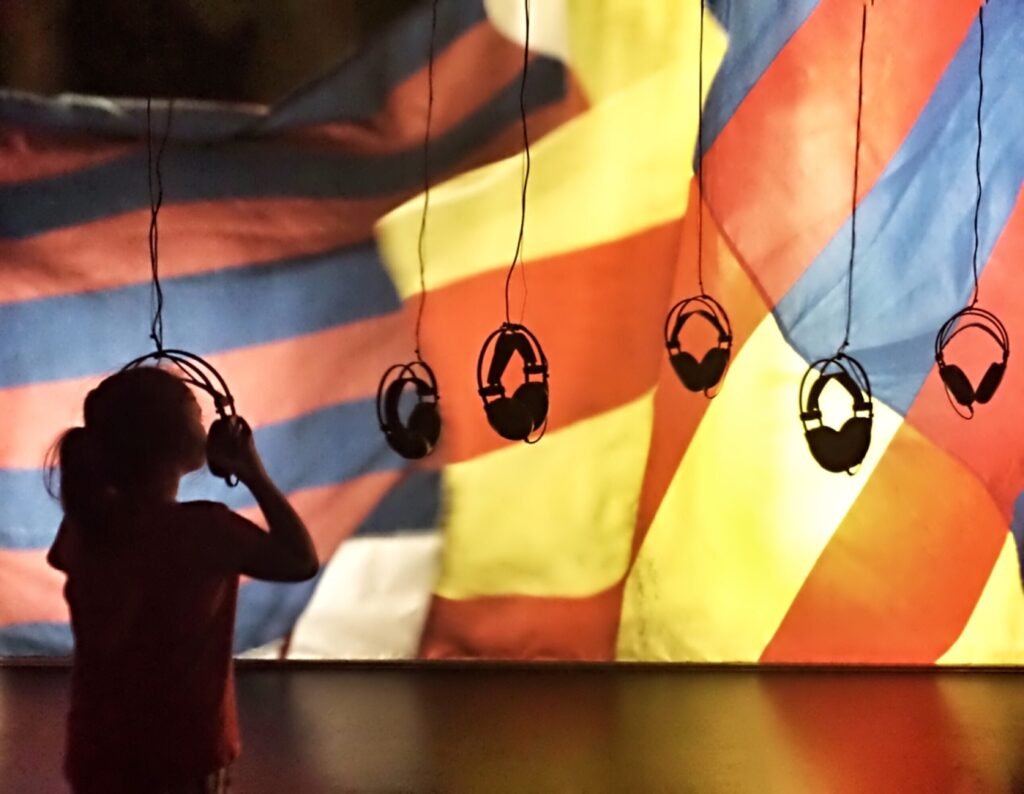Sound art shifts the role of vision as the dominant sense in aesthetic experience. It offers an auditory immersion that transforms sound into a medium of creation and perception. Rather than being a mere complement to the image, sound becomes the main element, challenging us to listen with sensitivity, attention, and awareness. In this field, listening becomes a form of seeing.
This artistic approach reflects a profound change in the relationship between art, body, and space. Instead of simply observing, audiences find themselves immersed in acoustic environments that activate memory, focus, and sensation. Sound art invites presence — not just physical, but attentive and subjective listening.
The Origins and Expansions of Sound Art
Although the term “sound art” gained prominence in the 1970s, its roots date back to early 20th-century avant-garde movements. Italian futurist Luigi Russolo was one of the first to incorporate industrial noise into artistic practice with his intonarumori sound machines. His manifesto The Art of Noises (1913) called for a break from traditional harmony in favor of mechanical and urban sounds.
From that point on, artists such as John Cage, Pierre Schaeffer, and Pauline Oliveros began exploring sound as an independent form. Cage, in particular, played a crucial role by introducing silence as a compositional element — as in 4’33” (1952), where ambient noise becomes the artwork itself. This inversion paved the way for sound art as a critical and sensory practice.
According to Sound Art: Beyond Music, Between Categories (LaBelle, 2006), sound art includes more than experimental music. It embraces acoustic installations, sound sculptures, radio art, electronic circuits, and site-specific projects. It is an interdisciplinary field that blends art, science, technology, and perception.]
Installations, Expanded Listening, and Bodily Experience
In sound art, sound is not just heard — it is felt. Installations like those by Janet Cardiff use multi-channel audio and binaural techniques to guide audiences through three-dimensional soundscapes. In The Forty Part Motet (2001), Cardiff separates a choral piece into 40 individual speakers arranged in a circle, immersing listeners in a spatial and emotional experience.

Another significant artist is Christina Kubisch, who explores electromagnetic fields with custom headphones, transforming invisible electrical energy into hidden soundscapes. These practices expand listening beyond the audible, revealing acoustic layers often missed in daily life.
These works not only propose a new relationship with sound but also require a level of attention that transcends passive hearing. Listening becomes active, embodied, and contextual. The body is part of the artwork, serving as a resonant and interpretive tool.
Sound Art in Contemporary Circuits
Institutions worldwide increasingly recognize sound art as a vital part of contemporary production. Venues such as ZKM (Germany), MACBA (Barcelona), MoMA PS1 (New York), and Sesc Pompeia (São Paulo) have held exhibitions focused entirely on listening as an artistic language.
The Sound Art Archive compiles key works, texts, and documentation about the global development of sound art. Furthermore, universities like Goldsmiths (University of London) offer dedicated academic programs in the field, reflecting institutional recognition of sound art’s importance.
This growing validation shows that sound art is not just experimental — it is a mature language that expands our understanding of the sensory world. In a time of visual excess and constant distraction, listening can be an act of resistance and depth. Listening, when treated as an artistic gesture, reconnects us to space, others, and ourselves.
More than a technical or innovative exercise, sound art is an invitation to hear the world more attentively. By turning sound into aesthetic language, it redefines how we experience time and space. Seeing, after all, can begin with the ears.



